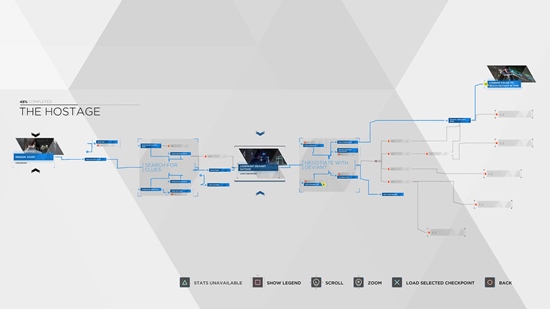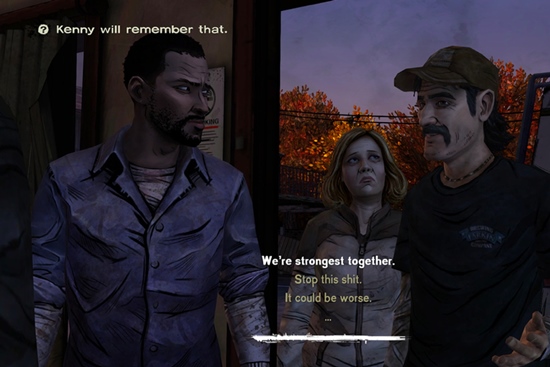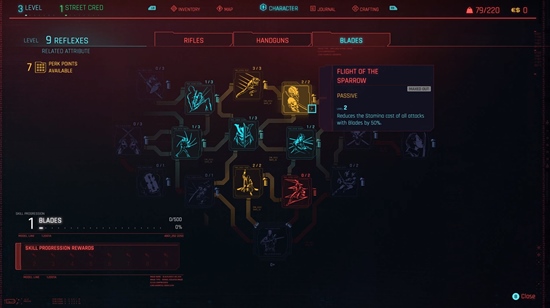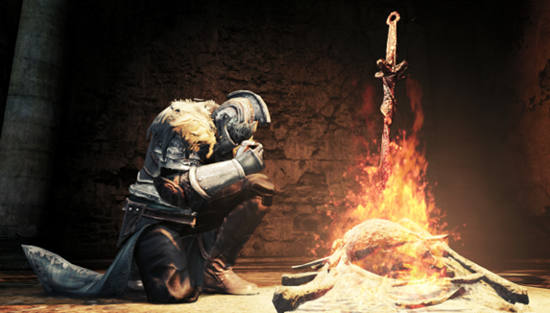Feedback in games – how to design rewards and punishments?
- June 11, 2021
- Karolina Cieślak
If the players don’t get quick and clear feedback in games, there is a very high probability they will get frustrated and consequently find the game incomprehensible and pointless. Therefore, it is essential that feedback – particularly rewards and punishments for the player – is designed thoughtfully. How to do it?
What is feedback in games and how does it affect the player?
Feedback in games is a reaction, a response. The player performs an action and the game reacts to it. And back again: the game generates situations that the player reacts to. Game designers offer players various rewards and punishments – e.g. gaining resources, discovering new locations, gaining new skills, or losing health points or items.
Feedback in games can also take the form of simple visual elements (as in Biomutant , where graphics inform about a well-conducted attack) or changes in music, NPCs’ reactions, or a clear presentation of long-term consequences of the player’s choices. This last type of feedback can be really developed and cleverly designed, as in Detroit: Become Human.

On the other hand, a typical example of a game using music as a feedback tool is Cyberpunk 2077, where “calm” sequences, e.g. dialogues, are accompanied by a calm soundtrack, and when the dynamics of the events change, the music changes accordingly, which is well illustrated by the video below.
The different reactions of NPCs to players’ actions are primarily observed in non-linear games. For example in the Dragon Age series the protagonist’s companions judge the protagonist’s behavior which directly translates into the type of relationship they build with them.
In short, the various forms of feedback in games are important because they allow the player to:
– verify that they have a good understanding of the objectives of the game;
– avoid feelings of uncertainty, confusion and irritability;
– maintain a sense of meaning and control that is extremely important for player psychology.
There is no doubt, therefore, that it is worth taking care of properly designed interaction with the player. Keep in mind that feedback should happen quickly – immediately after the action is taken.
If the main consequences of actions are to be deferred, it is still important to signal the player that thir actions will bear fruit in the future – otherwise they might think what they did was pointless.
This kind of signal can be even a simple message – such as in the productions of Telltale studio where the game informs that a character “remembers” it.

Try Evidence designs experiences with feedback in games
At Try Evidence we have more than once had the opportunity to conduct laboratory tests of feedback in games commissioned by our clients. It turns out that inadequately designed feedback loops can significantly reduce the gaming satisfaction of your desired target audience.
In one of the games we examined, the main problem was the difficulty of distinguishing between different types of feedback – ending positive effects graphically looked the same as starting negative effects.
As such, by the time the bonus was achieved, players often felt like the game was punishing them, but they didn’t know for what reason causing considerable frustration.
In another of our projects, we encountered the problem of opponents disappearing with a delay. The lack of clear information on whether the enemy has already been defeated or has only a temporary invulnerability to blows caused confusion in the respondents.
We also came across situations where the game didn’t communicate clearly enough on how to defeat your opponent. The same production had another problem – the lack of a clear indication of the temporary resistance of the enemy to blows. The lack of feedback made players frustrated to see that their well-aimed shots were not delivering the logically desired results.
Another interesting example of the lack of explicit game feedback in our lab was when the effect of players’ actions was outside their field of view. There were certain buttons that opened important doors, but these were far away and invisible to the players, so they didn’t know if their actions had any effect. This resulted in frustration or, at the very least, negative uncertainty in the players surveyed, which in turn translated directly into lower game ratings.
How to design rewards well?
All the pleasant and positive effects of the actions the player takes are perceived by them as rewards. They function as a well-known positive reinforcement in psychology. If a player is rewarded for a behavior, they are more likely to repeat it in the future.
Research by neuroscientist Wolfram Schultz shows that rewards affect the release of dopamine in the brain, inducing pleasure. This makes
a player who has received a reward strives to get it again, which draws them into the game and makes them want to come back.
Rewards can take many forms, both “tangible” and more abstract. The types of rewards that appear most frequently in games are:
- Items: The player can, for example, find an item through exploration or receive it as a reward for defeating an opponent or completing a task.
- Access: to new areas, items.
- New skills and perks: these types of rewards add interest to the game’s content.

- Extra time: a solution used in games where the player is under time pressure. As a result of the right action, the player has the chance to extend the time frame in which they must fit in order to succeed. This type of reward primarily evokes a feeling of relief.
- Points: make a player’s skill level measurable. They provide the ability to both compare your performance over time and compare your own performance to that of other players.
- Praise: it is one of the least “tangible” forms of reward, but this does not mean that it has a worse effect than other rewards. Depending on the type of game, it can take the form of a simple on-screen message, graphic or sound effects, or e. g. praise spoken by an NPC.
In order to properly design a reward system and motivate with it to keep playing, there are some important rules to keep in mind:
- Irregular reinforcements produce the best results. Burrhus Skinner, the famous psychologist and one of the most important contributors and founding members of behaviorism, discovered that it is this type of reinforcement that is most effective. So, it is worth introducing an element of unpredictability into the reward system. For example – instead of rewarding the player for a given action always with the same item, it is better to use for this purpose different items (e. g. with different stats) or in a random number. This will keep the player’s attention and alertness, as well as curiosity. The quantity or quality of rewards should also increase as the difficulty of the game increases.
- Rewards are not always necessary. If the player is intrinsically motivated to perform a given action in the game, i. e. performs it for their own pleasure, there is no need to additionally reward them for it. This could do more harm than good, leading to the effect of excessive justification. In such a case, the player would perceive their own action as caused by external factors rather than their own intentions, and consequently, somewhat paradoxically, would derive less satisfaction from it. The exception is when the task set before the player is difficult or tedious – then the use of rewards is advisable – this will help to avoid discouragement.
- Ideally, awards should be made immediately. This way, the player quickly confirms his competence (dopamine release triggers pleasure) and gets the message that they are going in the right direction (this way we maintain the player’s sense of control).
How to design punishments well?
Punishments are all negative and unpleasant effects following the player’s actions. Excessive amounts can easily lead to frustration and should be used with caution. On the other hand, the presence of punishments introduces an element of risk and challenge to the game, which often increases the satisfaction with achieving the goal.
Punishments in games can manifest themselves in different ways. The most common forms can be found below.
- Losing points: losing points that a player has previously accumulated through their hard work will undoubtedly be seen as a negative consequence. As with rewards, points are a measurable indicator of how a player is doing – losing points shows them in a very direct way that they have made a mistake.
- Going back to the last checkpoint or to the beginning of the game: As a result of a mistake, the player is taken back to the previous checkpoint or to the beginning of the game and must complete the sequence all over again.
In very difficult games, the shorter the intervals between checkpoints, the more motivating the punishments are for the player.
This is because they can learn directly from their mistakes and thus, polish their skills more effectively.

- Slow movements or other negative perks: when using this type of punishment, it is important to ensure that the negative effect wears off after some time or that the player can remove it by appropriate actions.
- Loss of: items or positive effects.
As with rewards, there are several regularities associated with punishments that are good to keep in mind when designing a game:
- Punishments should be applied less frequently than rewards. Remember that punishments can easily cause discouragement and even anger.
- The player must understand why he is being punished. Otherwise, they won’t know what they’re doing wrong, which in turn will cause frustration. Therefore, research into players’ understanding of negative feedback and their well-being in the context of punishments is always an essential part of Try Evidence’s lab work.
- Punishments should be fair. If the player perceives them as unfair, they will not derive pleasure or satisfaction from the game. Griftlands is a good example of a game where players felt the punishments were unfair. They were disturbed by the fact that in the event of death, they were moved back to a very distant checkpoint which meant they had to replay even two-and-a-half-hour sequences. This type of punishment was considered far too excessive and inconsistent with the genre of the game – as Griftlands is a game with a relatively elaborate storyline in which the death cycle is not inherent (as is the case with Hades, for example).
- The player should have a clear opportunity to avoid punishment by appropriate action.
Our experience in the Try Evidence game lab teaches us that a feedback system can significantly affect a games rating, player engagement, and willingness to recommend a title to friends. Therefore, it is very important that feedback in games is designed in the right way; and so, we decided to share with you some fundamental thoughts on the subject. We hope the above tips make it easier and more organized for you to think about this very complex aspect of game development.
We also encourage you to check out our text on how to design the perfect game tutorial.
–
Want to cite this article? Do it in an elegant way:
Cieślak, K. (2021, 02 05). How to design a perfect game tutorial? https://tryevidence.com/blog/feedback-in-games-how-to-design-rewards-and-punishments/







